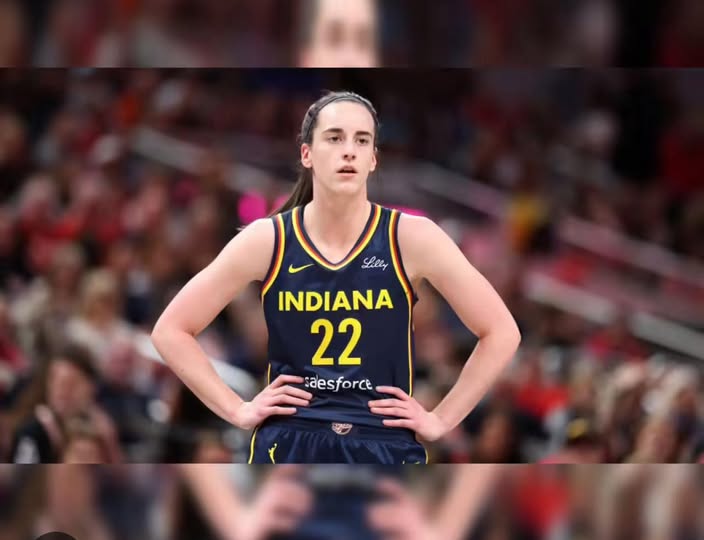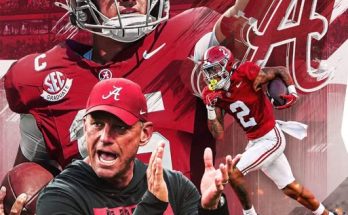Caitlin Clark Is Falling — And That’s Totally Normal for Someone on the Path to Greatness
Caitlin Clark’s journey into the WNBA has not been without turbulence. The transition from NCAA stardom to the pros is never seamless, not even for a generational talent. And yes, she’s falling. Not just literally — as she gets knocked down by hard fouls or outmuscled by seasoned veterans — but metaphorically too. Her early performances have included off-nights, defensive lapses, missed game-winners, and moments where the speed of the professional game seems a step ahead. But here’s the truth that too many forget in the rush to judge: falling is not failure. It’s foundation. It’s the bedrock of greatness.
Clark came into the league carrying the kind of expectations rarely seen in women’s basketball. From the moment she entered the 2024 WNBA Draft, she was hailed as the savior, the needle-mover, the spotlight magnet. Her games at Iowa drew sellout crowds and record-breaking television audiences. She redefined the long three-pointer, built a brand on court vision and swagger, and inspired a new generation of fans — all before playing a single pro game. But in a league filled with grown women who’ve been grinding for years without the fanfare, none of that legacy grants her immunity. In fact, it paints a target on her back.
The WNBA isn’t college. The speed is faster. The physicality is unrelenting. The scouting is meticulous. There’s no warm-up schedule filled with tune-up games. Every matchup pits her against Olympians, MVPs, and grizzled defenders who take pride in making even the brightest stars earn every inch. And yet, that’s the beauty of it. Greatness demands friction. And Caitlin Clark, for all her talent and acclaim, is now being tempered in fire.
When fans or media personalities point to her turnovers or her shooting percentages, when they dissect her every move with the critical lens of a veteran, they’re missing the point. What matters more is how she responds. And Clark has responded like a pro. She’s never once shied away from taking accountability. She’s never made excuses. She’s absorbing, adjusting, evolving. These “falling” moments — the missed defensive rotations, the high turnovers, the off shooting nights — they’re not symptoms of regression. They are growing pains, and they are completely, utterly normal.
Consider the path of any legendary player in any sport. Kobe Bryant airballed shots in clutch moments as a rookie. LeBron James was doubted early on for his lack of a consistent jumper. Michael Jordan took years to overcome the Detroit Pistons and win his first title. Greatness doesn’t arrive fully formed. It sharpens in moments of adversity, and Clark is now encountering that crucible for the first time at the professional level.
The WNBA has always been a league that demands respect. It humbles you quickly if you come in thinking past glory will carry you. Clark is learning that lesson now — not because she’s not good enough, but because even the best need time. Diana Taurasi, one of the greatest ever, didn’t come into the league instantly dominating every matchup. Sue Bird didn’t master the point guard position overnight. Breanna Stewart had to learn how to carry a team through failure as well as success. What makes these athletes legends isn’t perfection — it’s perseverance.
Caitlin Clark isn’t falling because she’s weak. She’s falling because she’s climbing. And climbing is messy. It involves scraped knees, bruised egos, and learning when to lean and when to leap. If she weren’t facing adversity, it would mean the league wasn’t challenging her. And if the league isn’t challenging her, then greatness would never arrive.
There’s also something uniquely American about our impatience with stars. We build them up, sometimes faster than we should, then act stunned when they don’t live up to the impossible standards we helped set. Clark’s every move is under a microscope — from postgame quotes to mid-game body language. We treat each turnover as a referendum, every cold shooting night as a crisis. But growth is not linear, and pressure has never birthed brilliance overnight.
Clark’s style of play — daring, aggressive, full of risk — is inherently vulnerable to volatility. She doesn’t play safe basketball. She doesn’t hide in the shadows or defer when things get tough. She steps into deep threes with the confidence of someone who believes she can make magic, even if she just missed three in a row. She threads no-look passes through windows that sometimes slam shut. That’s the same boldness that electrified college arenas and broke television records. The same daring will also create mistakes, especially against WNBA defenders who punish even the slightest misread.
That’s not recklessness. That’s evolution in motion.
And make no mistake — her impact is still undeniable. Even amid the struggles, Clark has continued to fill arenas. She’s drawing crowds, drawing defenders, and drawing attention to a league that has deserved it for years. Her presence is not a distraction from the league’s established stars — it’s a spotlight that illuminates them further. For every fan who shows up for Clark, many are discovering legends like A’ja Wilson, Arike Ogunbowale, Napheesa Collier, and Nneka Ogwumike. That’s not a problem. That’s progress.
Clark’s journey isn’t just about stats or win-loss records. It’s about resilience. About adapting in real time to the steepest learning curve she’s ever faced. About embracing the uncomfortable and still showing up. And show up she does — every night, against double teams and defensive traps, on long road trips, with cameras flashing and critics waiting. That takes guts.
There’s also an unseen toll to this level of scrutiny. Mental fatigue. The weight of carrying expectations not just from a team, but from a movement. From young girls who wear her jersey. From fans who see her as the future of women’s basketball. That’s an enormous mantle, and Clark has shouldered it with grace. But she’s still human. Still 22. Still growing into the athlete, and woman, she’s destined to be.
The conversation around Clark should evolve, just like her game. Instead of fixating on her stumbles, we should celebrate her willingness to fall forward. To learn in public. To keep competing even when the shots don’t fall or the plays break down. That’s what the path to greatness actually looks like — not highlight reels strung together, but grit between the glamor.
There’s a long season ahead. There will be more growing pains. More nights when the jumpers don’t fall, and defenders get the better of her. But there will also be nights when the magic returns. When the passes connect, the crowd erupts, and the momentum shifts. And those nights will come not despite the struggle, but because of it.
Caitlin Clark is not a finished product. She’s a project in motion. And that’s exactly where greatness starts.
Falling is part of the story. But staying down never is. And if we’ve learned anything from Clark’s rise, it’s that she never stays down for long.



